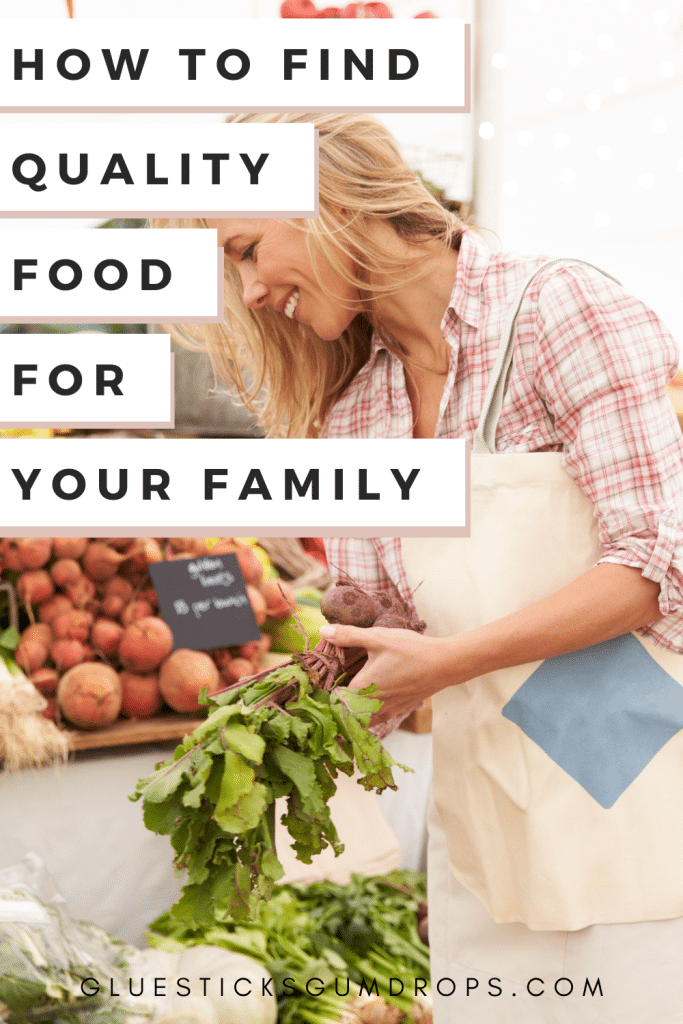Food is not just sustenance; it’s the foundation of a healthy and happy life. As a parent, providing quality food for your family is a top priority. But how do you make the best choices for your loved ones in a world filled with countless food options, confusing labels, and conflicting information? This comprehensive guide is here to help you navigate the complex landscape of food choices and find the highest quality, nutritious, and delicious options for your family.

Check Various Markets
Farmers’ markets are excellent sources of fresh, seasonal, and locally grown produce. They provide an opportunity to connect with local farmers, learn about their farming practices, and discover unique, region-specific ingredients. Many farms also offer pick-your-own options, allowing you to harvest fruits and vegetables directly from the source. This is a fun and educational experience for families. Food cooperatives prioritize organic, local, and ethically sourced products. Members often have a say in the store’s operations and sourcing decisions.
Several online platforms connect consumers with small-scale, sustainable food producers. You can order organic, artisanal, and locally sourced products and deliver them to your door. Explore the internet, where you may order boudin online, a flavorful and high-quality food item that reflects the principles of taste, nutrition, and ethical sourcing. Additionally, online platforms provide convenient access to a wide range of quality food products, making it easier to make informed and ethical choices for your family’s meals.
Understand Quality Food
Quality food provides essential nutrients, is safe to eat, and offers taste satisfaction. It is produced using sustainable and ethical practices that respect the environment, animals, and workers involved in its production. Quality food should also be free from harmful additives, pesticides, and excessive processing. It is the cornerstone of good health and well-being.
High-quality food is more flavorful and enjoyable, making mealtime a pleasurable experience for the whole family. A diet based on quality food reduces the risk of chronic diseases and promotes longevity. Supporting ethical and local food producers contributes to strong communities and fair labor practices.

Evaluate Food Labels and Certifications
When shopping for food, deciphering labels can be confusing. Fortunately, various labels and certifications can help you make informed choices. Here are some essential labels to look for:
- USDA Organic: The USDA Organic label indicates that a product has met strict organic standards. It means the food is free from synthetic pesticides, genetically modified organisms (GMOs), and artificial additives. Organic farming practices prioritize soil health and sustainable agriculture.
- Non-GMO Project Verified: The Non-GMO Project Verified label assures consumers that a product does not contain genetically modified organisms (GMOs). GMOs are organisms with genetic material altered in a way that does not occur naturally.
- Fair Trade: The Fair Trade label indicates that the product was produced and traded under ethical and fair labor conditions. This label is commonly found in coffee, chocolate, and other imported goods.
- Animal Welfare Certifications: Look for certifications like “Certified Humane” or “Animal Welfare Approved” on meat, poultry, and dairy products. These certifications ensure that animals are raised and treated humanely.
- Marine Stewardship Council (MSC): The MSC label on seafood indicates that the fishery has met strict sustainability standards, ensuring that the seafood is sourced from healthy fish stocks and harvested with minimal environmental impact.
- Grass-Fed and Pasture-Raised: When buying meat, look for labels that specify “grass-fed” for beef and “pasture-raised” for poultry and eggs. These labels indicate that animals were raised on a natural diet in humane conditions.
Prioritize Nutrient-Dense Foods
Quality food isn’t just about avoiding harmful ingredients; it’s also about choosing nutrient-dense options that promote health and vitality. Choose brown rice, quinoa, and whole wheat bread over refined grains. Incorporate fruits and vegetables into your family’s diet. Different colors indicate different nutrient profiles, so aim for a rainbow of choices. Opt for lean protein sources which are rich in essential amino acids without the excess saturated fat found in some meats.
Include sources of healthy fats in your diet, such as avocados, nuts, seeds, and olive oil. These fats are essential for brain health and overall well-being. Choose dairy products or alternatives fortified with calcium and vitamin D. These nutrients are vital for bone health. Be mindful of added sugars in foods and beverages. Limit sugary snacks and opt for naturally sweet options like fresh fruit—practice portion control to avoid overeating, which can lead to excess calorie intake and weight gain.

Providing quality food for your family is a journey filled with choices, learning, and nourishment. By understanding the importance of quality food, knowing where to find it, evaluating labels and certifications, and prioritizing nutrient-dense and sustainable choices, you can create a foundation of health and well-being for your loved ones.
Teaching your family about quality food and overcoming common challenges will empower you to make informed decisions and enjoy the benefits of a wholesome and satisfying diet. Remember that your efforts in selecting and preparing quality food are a meaningful expression of love and care for your family’s health and happiness.
